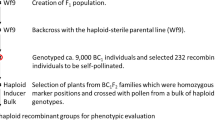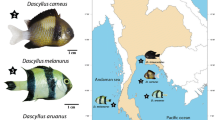Abstract
Heterochromatin has been traditionally regarded as a genomic wasteland, but in the last three decades extensive genetic and molecular studies have shown that this ubiquitous component of eukaryotic chromosomes may perform important biological functions. In D. melanogaster, about 30 genes that are essential for viability and/or fertility have been mapped to the heterochromatin of the major autosomes. Thus far, the known essential genes exhibit a peculiar molecular organization. They consist of single-copy exons, while their introns are comprised mainly of degenerate transposons. Moreover, about one hundred predicted genes that escaped previous genetic analyses have been associated with the proximal regions of chromosome arms but it remains to be determined how many of these genes are actually located within the heterochromatin. In this overview, we present available data on the mapping, molecular organization and function of known vital genes embedded in the heterochromatin of chromosomes 2 and 3. Repetitive loci, such as Responder and the ABO elements, which are also located in the heterochromatin of chromosome 2, are not discussed here because they have been reviewed in detail elsewhere.
Similar content being viewed by others
References
Adams, M.D., S.E. Celniker, R.A. Holt, C.A. Evans, J.D. Gocayne, P.G. Amanatides, S.E. Scherer, P.W. Li et al., 2000. The genome sequence of Drosophila melanogaster. Science 287: 2185-2195.
Berghella, L. & P. Dimitri, 1996. The heterochromatic rolled gene of Drosophila melanogaster is extensively polytenized and transcriptionally active in the salivary gland chromocenter. Genetics 144: 117–125.
Biggs, H.W., H.K. Zavitz, B. Dikinson, A. Van Der Straten, D. Brunner, E. Hafen & L.S. Zipursky, 1994. The Drosophila rolled locus encodes a MAP kinase required in the sevenless signal transduction pathway. EMBO J. 13: 1628-1635.
Busseau, I., M.C. Chaboissier, A. Pelisson & A. Bucheton, 1994. I factors in Drosophila melanogaster: transposition under control. Genetica 93: 101–116.
Carmena, M. & C. Gonzales, 1995. Transposable elements map in a conserved pattern distribution extending from betaheterochromatin to centromeres in Drosophila melanogaster. Chromosoma 103: 676–684.
De la Vega, H., C.A. Specht, Y. Liu & P.W. Robbins, 1998. Chitinases are a multi-gene family in Aedes, Anopheles and Drosophila. Insect Mol. Biol. 7: 233–239.
Dej, K. & A. Spradling, 1997. A heterochromatic ribosomal protein gene is specifically required during oogenesis to maintain nurse cell chromosome organization. A. Dros. Res. Conf. 38: 8B.
Devlin, R.H., B. Bingham & B.T. Wakimoto, 1990. The organization and expression of the light gene, a heterochromatic gene of Drosophila melanogaster. Genetics 125: 129–140.
Dimitri, P., 1991. Cytogenetic analysis of the second chromosome heterochromatin of Drosophila melanogaster. Genetics 127: 553–564.
Dimitri, P., 1997. Constitutive heterochromatin and transposable elements in Drosophila melanogaster. Genetica 100: 85–93.
Dimitri, P., B. Arca`, L. Berghella & E. Mei, 1997. High genetic instability of heterochromatin after transposition of the LINE-like I factor in Drosophila melanogaster. Proc. Natl. Acad. Sci. USA 94: 8052-8057.
Eberl, D., B.J. Duyf & A.H. Hilliker, 1993. The role of heterochromatin in the expression of a hetero-chromatic gene, the rolled gene of Drosophila melanogaster. Genetics 134: 277–292.
Eisen, A., M. Sattah, T. Gazitt, K. Neal, P. Szauter et al., 1998. A novel DEAD-box RNA helicase exhibits high sequence conservation from yeast to humans. Biochim. Biophys. Acta 1397: 131–136.
Eissemberg, J.C. & A.J. Hilliker, 2000. Versatility of conviction: heterochromatin as both repressor and an activator of transcription. Genetica 109: 19–24.
Elgin, S.C.R., 1996. Heterochromatin and gene regulation in Drosophila. Curr. Opin. Genet. Dev. 6: 193–202.
Gates, J. & C.S. Thummel, 2000. An enhancer trap screen for ecdysone-inducible genes required for Drosophila adult leg morphogenesis. Genetics 156: 1765-1776.
Gatti, M. & B.S. Baker, 1989. Genes controlling essential cell-cycle functions in Drosophila melanogaster. Gene. Dev. 3: 438–453.
Gatti, M. & S. Pimpinelli, 1992. Functional elements in Drosophila melanogaster heterochromatin. Ann. Rev. Genet. 26: 239–275.
Grewal, S.I. & S.C. Elgin, 2002. Heterochromatin: new possibilities for the inheritance of structure. Curr. Opin. Genet. Dev. 12: 178–187.
Hanai, S., M. Uchida, S. Kobayashi, M. Miwa & K. Uchida, 1998. Genomic organization of Drosophila Poly(ADP-ribose) Polymerase and distribution of its mRNA during development. J. Biol. Chem. 273: 11881-11886.
Hilliker, A.J., 1976. Genetic analysis of the centromeric heterochromatin of chromosome 2 of Drosophila melanogaster. Deficiency mapping of EMS-induced lethal complementation groups. Genetics 83: 765–782.
Inoue, Y.H. & D.M. Glover, 1998. Involvement of the rolled/MAP kinase gene in Drosophila mitosis: interaction between genes for theMAP kinase cascade and abnormal spindle. Mol. Gen. Genet. 258: 334–341.
Kay, M.A., J.-Y. Zhang & M. Jacobs-Lorena, 1988. Identification and germline transformation of the ribosomal protein rp21 gene of Drosophila melanogaster: complementation analysis with the Minute QIII locus reveals nonidentity. Mol. Gen. Genet. 213: 354–358.
Kelly, Z.E., A.M. Phillips, M. Delbridge & R. Stewart, 1977. Identification of a gene family from Drosophila melanogaster encoding proteins with homology to invertebrate sarcoplasmic calcium-binding proteins (SCPS). Insect Biochem. Molec. 27: 783–792.
Koryakov, D.E., I.F. Zhimulev & P. Dimitri, 2002. Cytogenetic analysis of the third chromosome heterochromatin of Drosophila melanogaster. Genetics 160: 509–517.
Lu, B.Y., P.C. Emtage, B.J. Duyf, A.J. Hilliker & J.C. Eissenberg, 2000. Heterochromatin protein 1 is required for the normal expression of two heterochromatin genes in Drosophila. Genetics 155: 699–708.
McKee, B.D., 1998. Pairing sites and the role of chromosome pairing in meiosis and spermatogenesis in male Drosophila. Curr. Top. Dev. Biol. 37: 77–115.
Nichols, R., S.A. Schneuwly & J.E. Dixon, 1988. Identification and characterization of a Drosophila homologue to the vertebrate neuropeptide cholecystokinin. J. Biol. Chem. 263: 12167-12179.
Oda, H., T. Uemura, K. Shiomi, A. Nagafuchi, S. Tsukita & M. Tekeichi, 1993. Identification of a Drosophila homologue of α-Catenin and its association with the ARMADILLO protein. J. Cell. Biol. 121: 1133-1140.
Parks, S. & E. Wieschaus, 1991. The Drosophila gastrulation gene concertina encodes a G alpha-like protein. Cell. 64(2): 447–458.
Pimpinelli S. & P. Dimitri, 1989. Cytogenetic organization of the Rsp (Responder) locus in Drosophila melanogaster. Genetics 121: 765–772.
Pimpinelli S., M. Berloco, L. Fanti, P. Dimitri, S. Bonaccorsi, E. Marchetti, R. Caizzi, C. Caggese & M. Gatti, 1995. Transposable elements are stable components of Drosophila melanogaster heterochromatin. Proc. Natl. Acad. Sci. USA 92: 3804-3808.
Rollins, A.R., P. Morcillo & D. Dorsett, 1999. Nipped-B, a Drosophila homologue of chromosomal adherins, participates in activation by remote enhancers in the cut and Ultrabithorax genes. Genetics 152: 577–593.
Roseman, R.R., E.A. Johnson, C.K. Rodesch, M. Bjerke, R.N. Nagoshi & P.K. Geyer, 1995. A P element containing suppressor of Hairy-wing binding regions has novel properties for mutagenesis in Drosophila melanogaster. Genetics 141: 1061-1074.
Schulze, S., D.A. Sinclair, E. Silva, K.A. Fitzpatrick, M. Singh, V.K. Lloyd, K.A. Morin, J. Kim, D.G. Holm, J.A. Kennison & B.M. Honda, 2001. Essential genes in proximal 3L heterochromatin of Drosophila melanogaster. Mol. Gen. Genet. 264: 782–789.
Sinclair, D.A.R., D.T. Suzuky & T.A. Grigliatti, 1981. Genetic and developmental analysis of a temperature-sensitive Minute mutation of Drosophila melanogaster. Genetics 97: 581–606.
Spradling, A.C., D. Stern, A. Beaton, E.J. Rhem, T. Laverty, N. Mozden, S. Misra, G.M. Rubin et al., 1999. The Berkeley Drosophila genome project gene disruption project. Single P element insertions mutating 25% of vital Drosophila genes. Genetics 153: 135–177.
Sun, F.L., M.H. Cuaycong & S.C. Elgin, 2001. Long-range nucleosome ordering is associated with gene silencing in Drosophila melanogaster pericentric heterochromatin. Mol. Cell. Biol. 21: 2867-2879.
Wakimoto, B.T. & M.G. Hearn, 1990. The effects of chromosome rearrangements on the expression of heterochromatic genes in chromosome 2L of Drosophila melanogaster. Genetics 125: 141–154.
Warner, T.S., D.A. Sinclair, K.A. Fitzpatrick, M. Singh, R.H. Devlin & B.M. Honda, 1998. The light gene of Drosophila melanogaster encodes a homologue of VPS41, a yeast gene involved in cellular-protein trafficking. Genome 41: 236–243.
Weiler, K.S. & B.T. Wakimoto, 1995. Heterochromatin and gene expression in Drosophila. Ann. Rev. Genet. 29: 577–605.
Zhang, P. & A.C. Spradling, 1994. Insertional mutagenesis of Drosophila heterochromatin with single P elements. Proc. Natl. Acad. Sci. USA 91: 3539-3543.
Author information
Authors and Affiliations
Rights and permissions
About this article
Cite this article
Dimitri, P., Corradini, N., Rossi, F. et al. Vital Genes in the Heterochromatin of Chromosomes 2 and 3 of Drosophila Melanogaster . Genetica 117, 209–215 (2003). https://doi.org/10.1023/A:1022996112742
Issue Date:
DOI: https://doi.org/10.1023/A:1022996112742




